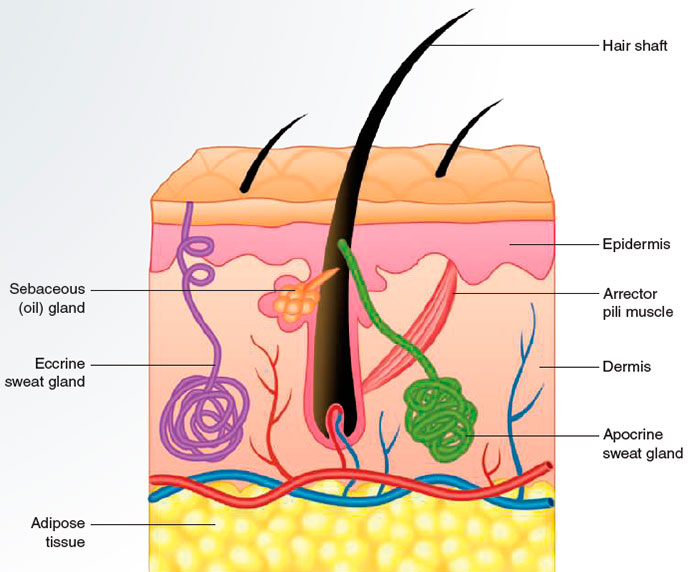Sudoriferous and Sebaceous: The Two Essential Skin Glands You Need To Know
The skin is a sophisticated organ, performing a range of functions vital to maintaining overall health. It not only offers a protective barrier against environmental threats but also acts as an active organ regulating body temperature and detoxification, among other functions. A fundamental component of these functions are the skin’s glands, specifically, the sudoriferous and sebaceous glands.

Sudoriferous and Sebaceous
Sudoriferous Glands: The Body’s Cooling and Detoxifying System
Also known as sweat glands, sudoriferous glands play a crucial role in regulating body temperature and detoxifying the body. The glands achieve this by excreting perspiration, which cools the body as it evaporates from the skin’s surface. Simultaneously, sweat carries away excess salts and unwanted chemicals, aiding in detoxification.
Each sudoriferous gland consists of a coiled base, known as the secretory coil, and a sweat duct that opens onto the skin’s surface to form a sweat pore. While these glands are distributed throughout the body, they are more densely located on the palms, soles, forehead, and underarm regions.
Controlled by the nervous system, the activity of sudoriferous glands can increase due to various factors, such as heat, exercise, emotional stress, and certain medications. On average, these glands excrete approximately 1 to 2 pints (or 0.5 to 1 liter) of sweat per day, which contains trace amounts of essential minerals like sodium, potassium, and magnesium.
Sebaceous Glands: The Natural Moisturizer
Sebaceous glands, commonly known as oil glands, secrete a fatty substance called sebum that lubricates the skin and maintains the softness of the hair. These glands, structured as small sacs with ducts that open into the hair follicles, are widely distributed across the body, excluding the palms and soles.
Sebaceous glands are particularly large on the face and scalp, highlighting their role in maintaining the health of facial skin and hair. However, the overproduction of sebum can lead to common skin concerns like oily skin, acne, and scalp problems, emphasizing the need for balance in sebum production.

Balancing Skin Health
Maintaining the health and balance of the sudoriferous and sebaceous glands is integral to overall skin health. This can be achieved through various methods, including proper hydration, balanced diet, regular exercise, and skincare practices tailored to individual skin needs.
- Hydration: Drinking sufficient water aids in effective sweating, promotes detoxification, and helps maintain skin moisture.
- Balanced Diet: A diet rich in essential fatty acids, antioxidants, and vitamins can support the health of skin glands and contribute to a well-regulated sebum production.
- Regular Exercise: Exercise naturally stimulates sweat glands, aiding in detoxification and potentially improving the health and appearance of the skin.
- Skincare Routine: A skincare routine designed for your specific skin type can help manage oil production, maintain hydration, and support the overall health of the skin.
Understanding the role of skin glands can help us appreciate their importance in maintaining healthy skin. By caring for these essential glands, we can preserve our skin’s natural balance and enhance its resilience against environmental challenges, helping us to maintain a radiant and healthy complexion.






